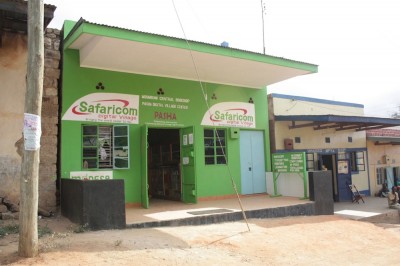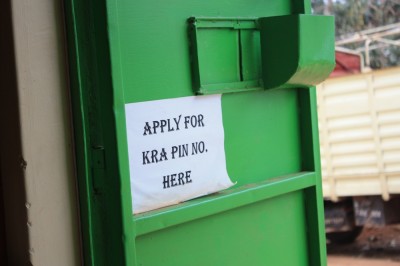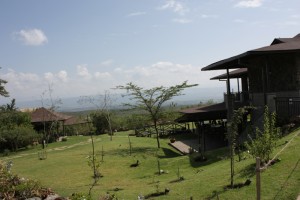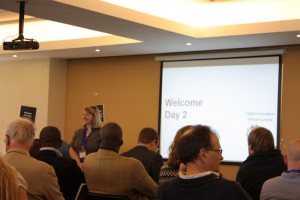Archive for the ‘muchiri’ tag
Government Services Intermediation: The New Role for Cybercafes.
Mbumbuni is a rural market town in Kenya’s Mbooni East District approximately 120km from Nairobi. Within the market is one of the Kenya ICT Board supported Pasha Centers and probably one of the best equiped cybercafes I have seen. When I visited the area in August of 2011, the 3G signal was poor and the center was using a GSM router connecting via EDGE to provide access to clients. The resulting experience was of course poor. For the residents in the area, the next cybercafe with a good connection is in Masii 8km away or in Wote town 50km away. For anyone wishing to register with the tax authority (a prerequisite to opening a bank account), a working cybercafe is the primary mode of accessing the authority’s online portal. There is no way of obtaining the registration at a KRA office. Cybercafes and Pasha centers charge an average of Ksh150 and as high as KSh250 to help clients complete the process and only a per minute charge for those savvy enough to login and do it themselves. For the residents of Mbumbuni, the Pasha center is their first option. Other options are guaranteed to be more expensive.
In the last four months I have travelled to parts of Kenya I only read about. Some of them almost 600 km away from Nairobi and others just an hours drive away. I have seen places where cybercafés are doing great and others where they are struggling to stay open. The landscape is varied but inspiring. Our estimates put the number of cybercafes in Kenya at approximately 2,500 most of them concentrated in the more densely populated parts of the country. Although statistics show a growing number of Internet users (35% of the population at last count), the vast number appear to be using their mobile phone as their primary gateway. Although feature phones can now provide 3G Internet access, play music and take pictures they still can’t print, scan or edit documents. With very low PC penetration in the country the rational decision is to therefore default to cybercafes for these tasks and others not yet available on mobile. Such as eGovernment.
The move by government departments and agencies such as the Kenya Revenue Authority to port services onto online spaces and then discontinue offline provision can be seen as a sign of progress. However, in using eGovernment to scale services fast across large areas at low cost, new barriers to access emerge. Digital barriers and cost barriers. These barriers have created new opportunities for cybercafé owners and Pasha center entrepreneurs allowing them to charge for a service that didn’t exist only a couple of years ago. The cyber café has now acquired a new role as an intermediary to government services introducing with it new costs of intermediation.
Whereas eGovernment presents a new opportunity for private enterprise in the form of new intermediation services, the government still needs to find ways of encouraging telcos to deploy better last mile connectivity (3G, LTE) to rural places where the financial investment may not achieve ROI in the short term. If poor connectivity remains a problem, the services may not be any closer to the people than they were before when the residents of Mbumbuni and Masii had to travel to Machakos, Wote or even Nairobi to get government services. In my opinion, there are three areas the Directorate of eGovernment and other actors in the space may consider giving priority as Kenya marches on into a fully digital future.
Better connectivity. Better 3G or LTE connectivity for the last mile to the cybercafes located in rural areas is a good place to start. Providing better connectivity could trigger consumption of data as people find utility for it. In places such as Maai Mahiu and Isinya we heard from a couple of people how frustrating spotty connections are. In Isinya, 40km from the city of Nairobi, residents opt to travel to Kajiado town or Kitengela rather than endure the local cybercafe’s unreliable connections.
Pricing Interventions / Guidelines. When intermediation services become high enough to become a bona fide barrier to access, there’s a problem. Ksh250 is enough to feed a family of four for a day or two. In areas where government services are only available online, this could mean that some families opt out of crucial government services they shouldn’t be having to do without. The initial premise is to bring services closer to the people. High financial costs neuter that objective. Introduction of price caps that keep it financially interesting for enterpreneurs to provide access to these services while remaining accessible to the majority of the people maybe an option worthy of some consideration.
Design for mGovernment. 24 million mobile devices are hard to ignore. Policy guidelines that allows government departments to design and deploy services on the mobile platform should be a priority in the short term. If bringing services closer to citizens is a priority, the mobile handset is as close as it can get.
As new formal intermediaries to government services begin to emerge with the rollout of new infrastructure and services, governments need to keep everyone in the ecosystem on the same page. Cybercafe owners need to remain motivated to provide the services, government departments need to create and train technical and customer care teams and citizens need to be educated on how to access and utilize these services.
The Open Innovation Africa Summit 2010
About 200 people from more than 24 countries converged on the Great Rift Valley Lodge for Open Innovation Africa Summit 2010. Organized by Nokia, infoDev and Cap Gemini it was three days of conversation, brainwriting (heard that one for the first time there) and consultations on four topics of importance to the continent. The summit followed the Accelerated Solutions Environment format owned by Cap Gemini.
The summit was organized along four streams and by the end of the three days, each stream had solid ideas on what the way forward would look like. You can see the four streams better explained here. In summary, they were;
- African Innovation Ecosystem
- Sustainability models for Base of the Pyramid
- The Mobile Information Society
- Human Capital – Education for All
I spent the two of the three days in the sustainability models for the base of the pyramid where lively conversations happened on co-creation models, incubators, a business model for educational gaming and crowd-sourcing. Hopefully, the Nokia/infoDev/CapGemini team will post the material generated and outcome summaries for the event sometime in the next few weeks.
As an outcome from the summit, we at Semacraft will be spending considerable time in the near future facilitating discussions around business model innovation and identifying other areas small or large enterprises can innovate in to deliver with success in the BoP. Follow us on Twitter (@semacraft) or subscribe to our RSS feeds for updates on the next workshops on BoP innovation.
You can see some reactions from the summit on the Techweez blog here and by Kachwanya here.
TweetImproving Adoption of Innovation in Emerging Markets.
In a previous post, we looked at the role of social proof in moving innovations from early adopters to the majority at the base of the pyramid. This is a follow-up to that post.
In the West, as in the East, word of mouth can make or break a business. In markets where traditional media is absent or penetration and access to data on products or services is minimal (or absent), word of mouth is the ONLY way for a brand to be known. How can brands use word of mouth to help their innovations cross the chasm?
TweetCustomer Engagement: Is the brand engaging back?
Listening and engagement. Very common terms in the ‘sociosphere’. We may have gotten listening right for the most part but engagement still has a ways to go. Unlike listening, real engagement seems to mean different things to different people making measurement all that more difficult. And probably futile. I do stand to be corrected on that though.
TweetWhen Your Brand’s Profile is Hijacked.
Brands have been establishing outposts on social sites such as Facebook, Twitter and LinkedIn now for a number of years. The last two years have reached fever pitch. Here are some basic realities of these profiles as we have found in our very unscientific survey.
- Many brands that have started experimenting on these sites update their content by logging in directly.
- There are organizations that use third-party services such as Co-Tweet and Hootsuite to update their content.
- Some organizations have been outsourcing the management of their outposts to agencies.
- Many profiles managed by agencies and/or brands with social media teams are updated by more than one person.
Here’s my take. The weakest link in the chain is the username and password. The efforts that have been made by criminal cyberspace gangs over the past decade to harvest identity data should worry administrators some. The Mariposa bot was a big wake-up call for us.
What does this mean for brands with a presence on the social web? Simple. Your website used to be a primary target for hackers. Now it’s going to be your social web profiles. Here’s a scenario.
- Brand A is a gourmet restaurant franchise.
- Brand A’s employee 227 manages the Twitter and Facebook profiles. He loses his laptop computer to a thief and the said computer ends up in the hands of Gang Y who find information valuable. Information such as usernames and passwords.
- Gang Y log in and sends messages to followers/fans inviting them to download x-rated videos at a special discount rate because they are fans of Brand A.
- Brand A discovers the breach when followers/fans begin to complain. As far as they are concerned, the messages came from a valid account they have a history with. They probably won’t believe it when Brand A claims to have lost control of their profiles for a period.
That, I think, is a veritable disaster. Does your business have a disaster plan for this sort of thing? Do you have policies or a strategy designed to ensure login credentials are secure or determine what to do when they are compromised?
Here a five things that can help you get a handle on things.
- Have a strategy that ensures passwords across the organization are strong and that explicitly directs what is to be done in the event of a breach.
- Lock things down. When you discover you’ve been hacked, revoke all access to the profiles other than direct login via the social site’s login page. Change all passwords immediately.
- Report the attack. It’s important to show some proactivity to reassure the both the fans/followers as well as the site that you are back in control.
- Tell the story loudly. Let your fans know you were hacked, which messages were not from you and that you’re back in control.
- Plug the leaks. Sometimes weak passwords are not the problem. It could very well be poor enforcement of security such as leaving logged in laptops unattended in public spaces.
Help me grow and improve this list. What’s your take?



